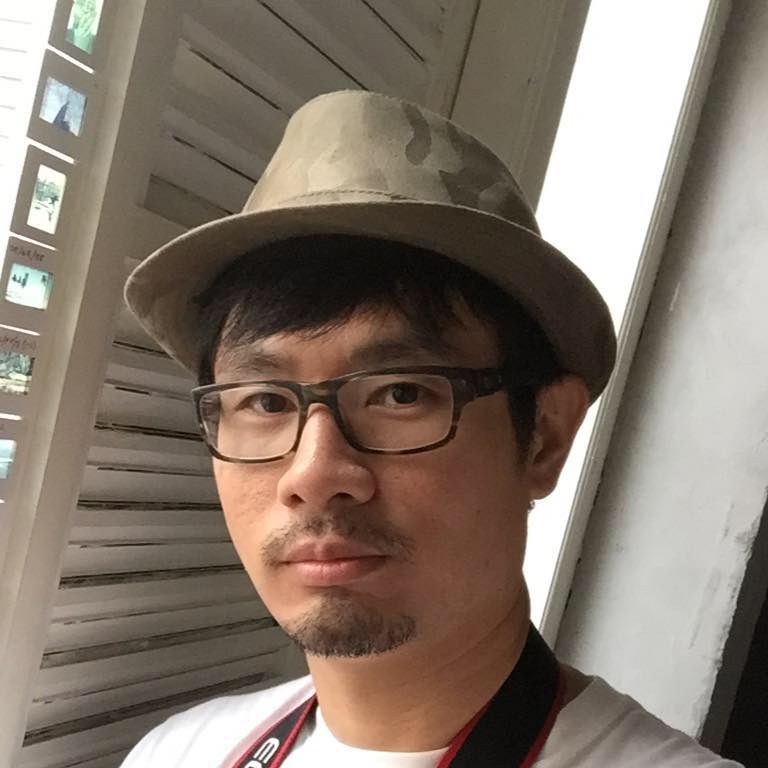
Today I sat down with Calvin Tan (via a webchat) for the first of what will be an occasional series, where I discuss a single topic with a well known and highly respected modeller.
Calvin is undoubtedly well-known, and highly respected by modellers around the world as literally a world-class historical figure painter. Calvin is also an Art Educator, so who better to discuss the Art/ Modelling debate with?
Chris
If we’re going to talk about art and modelling, we need to establish the definition of art first. What do we mean by art?
Calvin
Exactly. So I think for me, this is my take. I would consider art is something that basically defines any work of expression that evokes sentiment and elevates our human experience. I think that’s the main thing. When we talk about art, there’s always another thing that we always talk about, because it comes together with craft.
Arts and craft, it always comes together. So, craft and these two terms are usually connected. Because art has a craft, but craft doesn’t necessarily translate to artWhen I read the book, “Art and Fear”, it did say, for example, if you look at a violin, it’s been created by an old master, it takes many years of apprenticeship to shape the violin until it reaches its final state. But the tragedy of this, and I do say it’s a tragedy, that despite the numerous years and expertise to craft the violin, most people won’t call that violin a sculpture or a piece of art. But however, when a musician picks it up and maybe he plays a tune, and suddenly that becomes art.
The tune becomes the art. And when you look at a violin, although it requires years and years of mastery to create an instrument, it does not enjoy that level of prestige. And I say that when it comes to modelling, the same could be said, because models have always been sort of a representation. It’s always seen as a tool of learning. People don’t see it as a sculptural piece at all.
So it sort of, you know, goes back to Marcel Duchamp when he plays the fountain, remember the famous “fountain?” So what is this now? Is this a urinal or is this a sculpture? So, questions like this start to arise. And this has been, you know, this has always been provoked. I mean, hundreds of years ago. And in terms of when you go into the gallery, when you look at the urinal, is it now a piece of sculpture or is this an instrument?
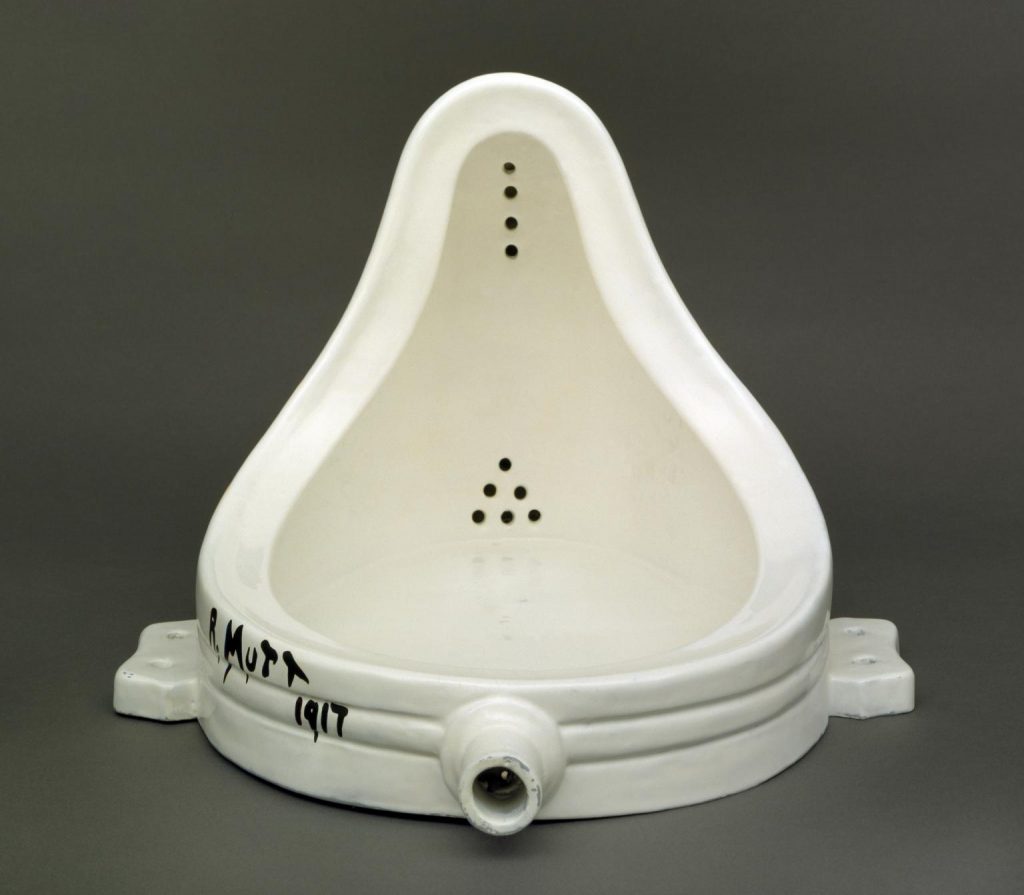
Chris
I remember when I was at art college, the debate was, is ceramics art? Because you know, you make a pot, it’s a craft to be able to throw a pot or to be able to hand form a pot, or ceramic, or what have you. And it seems like that’s one that was always very much debated, whether it was an art or a craft. And there’s a great deal of skill that goes into making it. And I think like the violin, It really depends how it’s made and the intent, because in recent years in this country in the UK, Grayson Perry has become very famous as an artist and he’s made mainly ceramics. But they were, it’s what they were decorated with, how they were decorated and how he made them, that made them art. And I think the same with the violin because people would argue that a Stradivarius is a work of art.
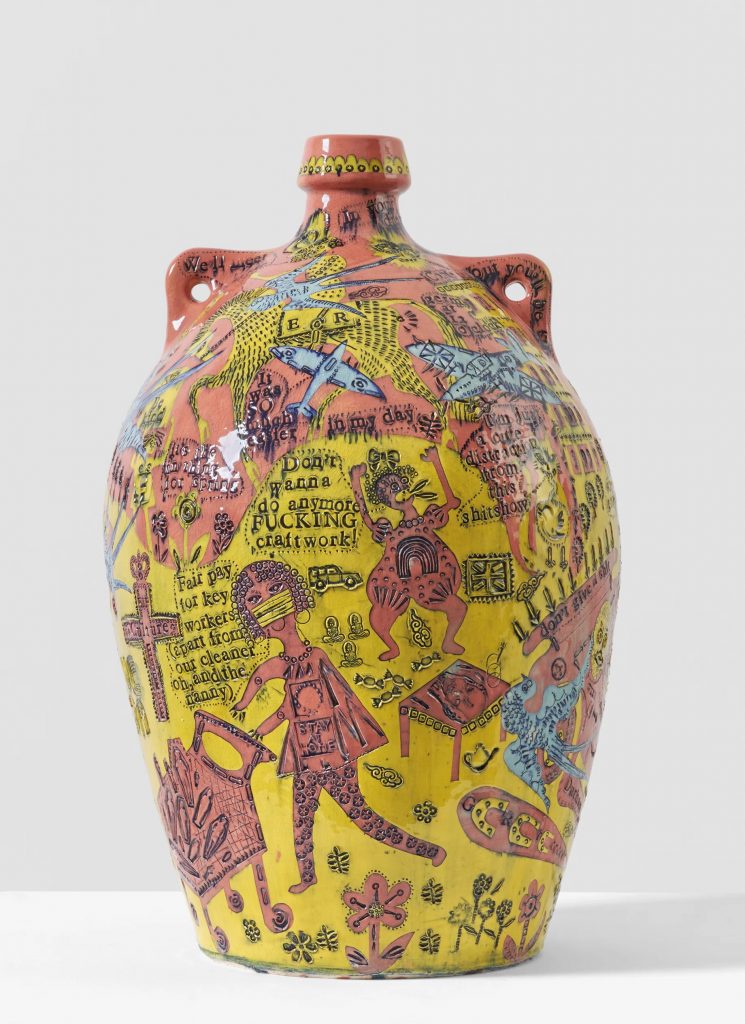
Calvin
Yes.
Chris
But it’s interesting because of what you said about when it’s played. I think some people could appreciate looking at it, that it’s a work of art, but most people would only be really able to appreciate it by the quality of its tone when it’s played. Because a lot of violins have been made throughout history and a lot of them are quite basic violins that look to the untrained eye like any other violin.
Calvin
Yes, correct.
Chris
but there’s a huge difference in quality between one and the other.
Calvin
Exactly, exactly. And this I would say that it’s within that very exclusive group of people who perhaps within the field or within the community of the artisans, they may consider a very well -made violin a work of art. Because again, I mean, firstly as far as the artisans are concerned, they appreciate the labour, the discipline it goes to creating something. And I think what the takeaway, if let’s say a violin is to be regarded as a work of art, the takeaway would be the emotional connection the viewer has with the object. I would say that is what art has. People will say that a piece of work will have a soul, but the soul is actually assigned by the viewer, whether or not we’re able to recognize and appreciate and see you know, the invisible. So, it’s almost very Zen, right? The Japanese believe every object has a soul. We’re able to see it, able to appreciate it. In a sense, they are a bit more sensitive and more in tune with certain objects, inanimate objects.
Chris
I think you say it’s assigned by the viewer and it is because if it doesn’t affect the viewer, I don’t think it’s art. I think it can affect you intellectually as well as emotionally or instead of emotionally, one or the other. But I think it’s a conversation because the art exists between the artist and the viewer, if you see what I mean, between the intent and the reception of the intent. And the craft comes in with how well that intent and effect is communicated.
Calvin
But I think the concept I can see is actually very universal. I would say that at the end of the day, there’s also what you call cognitive biases when people judge things or basically view objects. There’s a cognitive bias. For example, if you are into Spitfires, it’s like, oh, I know every model and a history of this.
And when you see a particularly well -made model represented in its full glory and accurately represented, I mean, you feel like your heart is skipping a beat and say, wow, this is so well done. And suddenly, you look past the model as a piece of plastic and metal and what else there is on the model and see it as, you know, an object with a soul and something to tell. So at that stage, at that point, you can see that object has transcended to just being a model to something of an artwork, an art piece. And that’s where you will start to be drawn into it and start to look at it more and immerse yourself in that model.
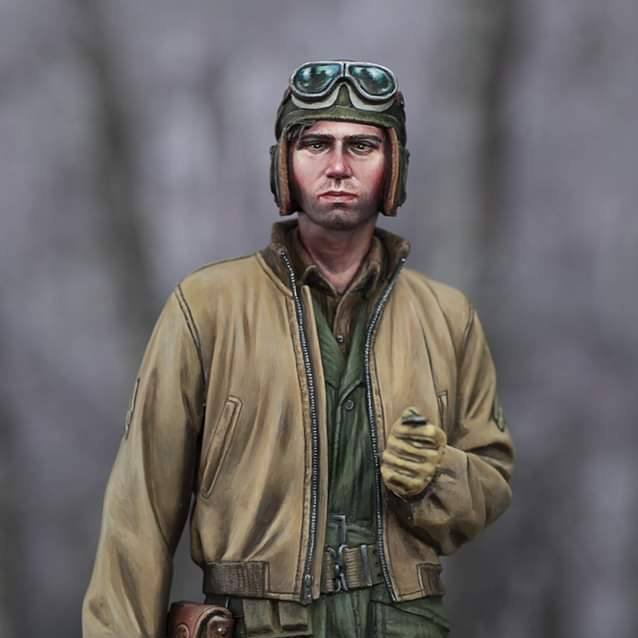
Chris
Something that people often talk about when this debate comes up is modelling art is that it’s creative. Do you think making a model kit is inherently a creative act?
Calvin
Yes.
I would say creativity is universal. Human beings are creative by nature. I mean, it is hardwired into our brains in order for us to survive, right? And creativity, I would say, is often conflated with artistry. Well, it’s actually more linked to problem solving. So it’s not so much about creating something new or refreshing.
Sometimes it’s about solving problems. Oh, for example, if your decals are damaged, how do you go about solving it? Is there a substitute? Is there an alternative? Things like this. And you can see creativity being utilized and being, what do you call that, leveraged to solve problems. For example, I don’t want to build so many tracks. So what can I do to get around it?
Some modelers, they tend to take shortcuts. But you can also see it from the flip side. You can see it as taking a shortcut could be something very creative, so long as they don’t get caught. So it’s always about trying to get away with murder. That’s what some people are trying to do, sort of speed up the process. I would say that building a model is inherently a creative act.
But. having said that, however, if building 1 ,000 models of the same, like say you’re painting an army for wargaming, now I don’t think there’s much creativity in that anymore. It becomes labor. You become a line production worker. And it does not engage your creative faculties at all. And therefore, it becomes a menial chore.
Chris
I think sometimes I felt like that when I’m building a kit which doesn’t require any or very little problem solving other than the usual basic modelling skills, you know, filling, sanding, so on. And you can kind of feel like, am I paying to work on an assembly line? You know, am I paying someone in order to be able to assemble something?
Do you think there is any creativity in that?
Calvin
I don’t think so. I would say that with every model, the experience should be different. Otherwise, what’s the point of doing it? It’s like watching a new movie, right? You don’t want to watch the same movie again and again and again and again. Unless there’s something new to discover, then yes, then it’s great. Oh, I didn’t notice this. I didn’t notice this.
But the thing is that if it gets too repetitive and gets too mundane and boring, that’s where you need to know that it’s time to move on. So yeah, why do it? Exactly. So I think at the end of the day, we humans want to be challenged. And I think a lot of modelers, they want to be challenged in terms of challenging themselves or attempting a new sort of project or mastering a technique.
For example, like figure painting or maybe painting camouflage. I think that’s something that’s refreshing. And I think I think there’s something unique that this hobby offers, the sort of challenges. So as I said, creativity is something that I would say that, I mean, being able to engage in a creative act, being able to engage in a creative act helps to basically enrich your life.
in that sense, because often you will come up a bit wiser, better, happier from actually going through that experience.
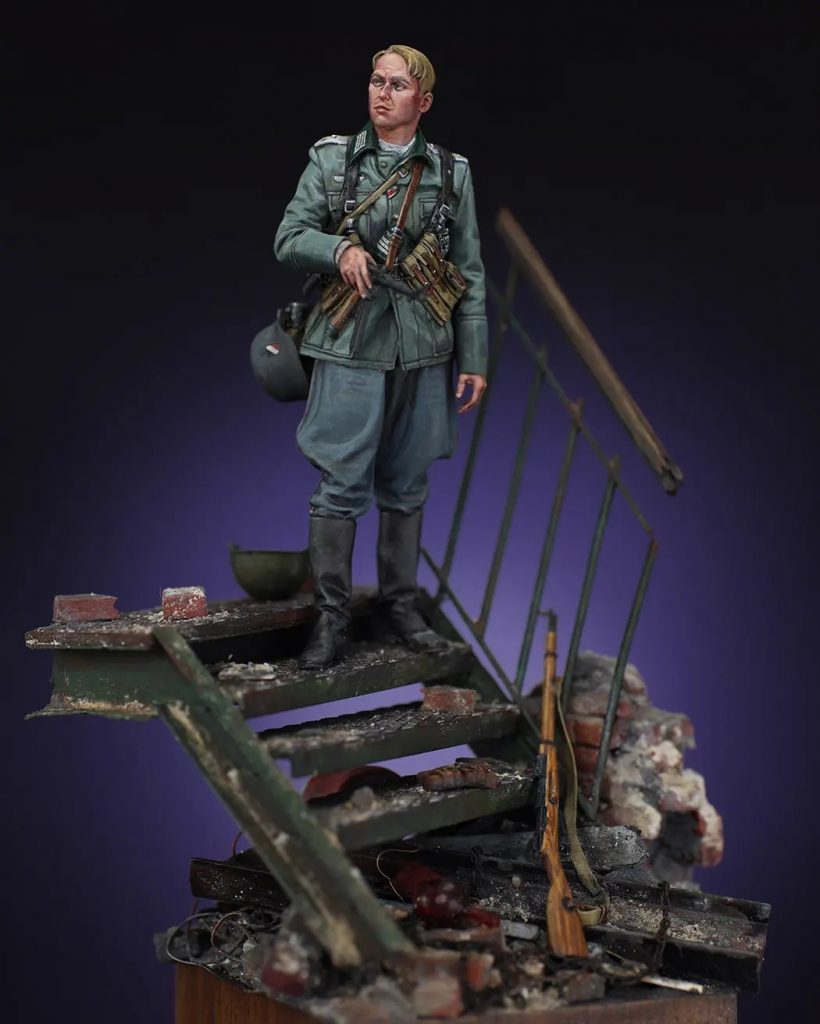
Chris
You said something interesting earlier though that creativity is not the same as artistry.
Calvin
Yes, I would say creativity is definitely a broader term. I mean, that artistry.
Chris
So if creativity is problem solving, what is artistry?
Calvin
So artistry is something that you does require creativity. But you also need creativity to be a successful engineer as well in any other fields. So creativity is present in everything in that we do. To be a chef, to be a sportsman, or whatever, it is there. You need to find innovative ways to solve problems.
Artistry, I would say, in a sense, like art is, is how do we use the resources that are at our disposal, our talents, our abilities, to create, enriching human experiences for others. If you have a good voice, you sing a very nice tune, you brighten up somebody’s day. And that is what essentially what art does, right? I mean, the good ones are thinking in terms of, oh, how can I make a difference, right, in this world, right? And how do I enrich the lives of others in that sense? I think that’s one of the purposes, you know, and, but there are some people who sort of hijack this and do it for their own ego and selfish intentions. It’s just to, you know, but again, we have to acknowledge these are very different people. They have been brought up very differently.
It’s part of their innate personalities. I mean, that’s how I see it. So in a sense, in terms of art, I think generally, it should serve the purpose of actually bringing people together. And I would say that it should possess these sort of virtues, in that sense. It should uplift and enrich the lives of others. So every time when I sort of paint a figure or create a piece, I always think of this at home, I mean, how do I accurately represent it? And such a people can learn from this, not just in terms of the technique, but how do I bring the story out using this medium of modelling and using it as a medium to tell a story? It can all basically to express my inspiration in that sense.
Chris
Do you think it’s the story that creates the emotional connection?
Calvin
I would say it is the response of the artist because every artist is like a vessel. You need to be inspired and once you’re inspired, you have this energy, this excitement, this flame that’s in it. And the question is how do I bottle this up and ship it to the rest of the world? And that’s where art comes in. You channel this inspiration outwards into your art. So be it poetry, music, and even modelling as well, right? And that’s how it is. So, I would say that as an artist, the main thing is to always be open and always learn what’s around you, absorb what’s around you, take it in. And that’s where the craftsmanship comes in. That’s where you are using modelling as a language rather than just focusing on the technique, or producing very decorative pieces, you know, and that’s where the work becomes expressive.
Chris
Do you think we focus too much on the craft side as modellers?
Calvin
Yes, I would say so. There is a difference in terms of arts and crafts. Now the thing about craft is that it is possible to attain perfection with craft. And that’s the difference between art and craft because art itself is not exactly very perfect. It may be rough around the edges, but the thing is that you get a sense of what the soul of this object is supposed to represent. There is a certain quality, semi almost indescribable, but you know there is a certain quality about it and it’s not perfect. Now with craft it’s very different because for longest time, scratch building as a craft, it’s all about precision. And now with 3D printing, there’s not really any need to bust up any styrene because you know whatever you’re going to do is only going to be 99 .9%. It won’t be 100 % as accurate as what a machine can print.
So in a sense, that’s where, in terms of craftsmanship, the age of perfection has arrived, through 3D modelling. It’s possible to scan an actual object and shrink it down to the exact size and print it out with precision. So as far as art is concerned, it requires the human intervention to come in and discern what is relevant and what’s irrelevant. And that is where the human touch comes in. And that’s where your sensibilities as an artist, as a person come in. You decide what to include or what to take away, and such that your audience will be able to grasp what you’re trying to communicate.
Chris
is fair to say we’re on the same page that modelling is generally speaking a craft but it can be art or you can make art with models.
Calvin
Yes. I would say if you look at this, you can categorically place scale models as sculpture. So the question is, is Marcel Duchamp’s a fountain or urinal? So it depends on how you want to sort of, how do you take it? How are you going to use this medium and bring it to the next level? So for example, when you start to represent certain objects in a different scale, people will have a different feel with that particular object. So if you look at pop art like Claes Oldenburg, he takes a clothes peg and blows it up to like giant. It’s like 1 ,000 times larger than its original size and suddenly becomes a sculpture. But you look at it in terms of the shape, it is a clothes peg. But suddenly, when you start to change the scale altogether, it becomes a sculpture. The aesthetics and all this. And you can suddenly look at the humble clothes peg and think, I never thought that there’s such elegance and beauty in this shape and this form. And this shape is, to be honest with you, any efficient objects that’s built from function is actually very beautiful.
Because it does serve the function, and there’s a certain geometry that governs its creation. And in that sense, that respect for geometry and nature gives it that inherent beauty. And that’s what I feel. I mean, there’s a reason as well. If you look at a Spitfire, it looks so sexy. It’s because the artist did not create that. That instrument, right?
It was actually created by engineers and designers who respected basically laws of aerodynamics to create and fashion that particular wall plane. And with that, you can see the aesthetics comes with it. And it seems that the aesthetics was like, oh, it came together because we did the math and the physics. And therefore, that’s why its shaped like this. And it functions very well.
So any object of beauty, I feel, has to represent certain truth and uphold certain ideals. And I think that’s what constitutes as beauty.
Chris
Do you think though, do you think when something is removed from its function by changing its scale, that allows us to appreciate the aesthetic? I mean, we see scale in relation to ourselves. So the clothes peg, once it stops being something you could literally peg clothes with and becomes a monumental object, changing its scale removes its function and allows you to appreciate the aesthetics.

Calvin
Correct. In a sense, it does, because you start to, you will not think of this anymore as a functional item, and you will start to look at it as a shape and you will appreciate it at an aesthetic level. And I think that’s what it does.
Chris
Do you think it’s kind of a fallacy to treat models as a real object at a distance when we’re working on them, if you see what I mean.
Calvin Tan
Well, I don’t think so. I mean, it all depends, whether or not. OK, for example, if you’re going to build a model and you’re going to build, like, say, a 1 .48 scale plane, it depends on your intention. You can just build it up and blow it up with firecrackers, or you’re going to use it as a token for wargaming, or you’re going to say to yourself, this is a small representation of history. You know?
And the thing is that all you want to do is a tribute to perhaps a Battle of Britain veteran who has flown in this particular plane. And you want to capture the whole story, the period, everything in that piece. So the things that determine how well the model is going to eventually look will largely depend, the creator, the modeler, what he hopes to achieve by building the model. Because the thing is that we are going to invest a lot of time and a lot of effort and to learn certain skills to build a particular model. And if you want it to be as realistic as possible, as convincing as possible, then it requires a longer journey. And the thing is that if your intentions are to create, let’s say, an accurate and realistic model, then you will be willing to make a sacrifice. So it all depends on the intent of the modeler. So for example, like Mirko Bayerl he’s actually a historian who models. I would never consider Mirko as a modeler. He’s more like a historian who models. He loves to see the truth, you know, in his pet subject, for example, Hungary in 1944 to 45. He likes that all the models represented during the period to be as accurate as possible. In a sense, he serves almost like a custodian, a gatekeeper to make sure that everything is as accurate as possible because he has interviewed a lot of veterans. And I believe that he has a lot of stories and he’s able to sort of channel all these stories into his work. And that’s what he wants to sort of represent. So he gets pretty annoyed and I can understand why, when they are not accurately or properly represented, he gets pretty annoyed with that. Because the thing is that he has all these references, you all need to do is just ask. He will gladly share this all with you.
I just want to see the truth being represented in the models as well. And I think a lot of people treat this more like a recreation as a hobby, say, oh, take it easy, man. I’m just gluing pieces of plastic together, making it look cool. But I think if you’re a historian, I think you find that this is a bit of a travesty. When you distort historical fact, amd turn it into some Hollywood, you know, what do you call that, action flick. Yeah, low budget B grade movie, right? Correct? Yeah.
Chris
But if you want to tell the truth, do you think sometimes the art comes in with exaggerating certain aspects or changing the exact representational side of it to heighten the emotion of it in some way?
Calvin
OK, so I think that is it. So the thing is that when it comes to that, in this case, when we start to move into painting technique, some of the painting techniques especially, they tend to go over the top. Because it’s all about creating the strongest visual appeal. And as a result, what happens is that it loses its what you call its original intent. The Panther, right? OK a Panther, 1944 Hungarian Panther, may not look like, it may not represent the period anymore. If you start to use a different palette of colors, it’s like, oh, this looks cool. I’ll just do it because it looks cool. And the markings are just an afterthought. And suddenly you feel that it’s well -built, but it does not really convey the mood of that particular time. And I think that artists, you need to understand your subject matter. And that’s where the research comes in. And I think a lot of people, especially the younger modelers, they are seduced by the look, the aesthetics of the model, but they fail to consider the historical context behind that. And I think in a sense, I think what a lot of the older generation of modelers who are more historically in tune
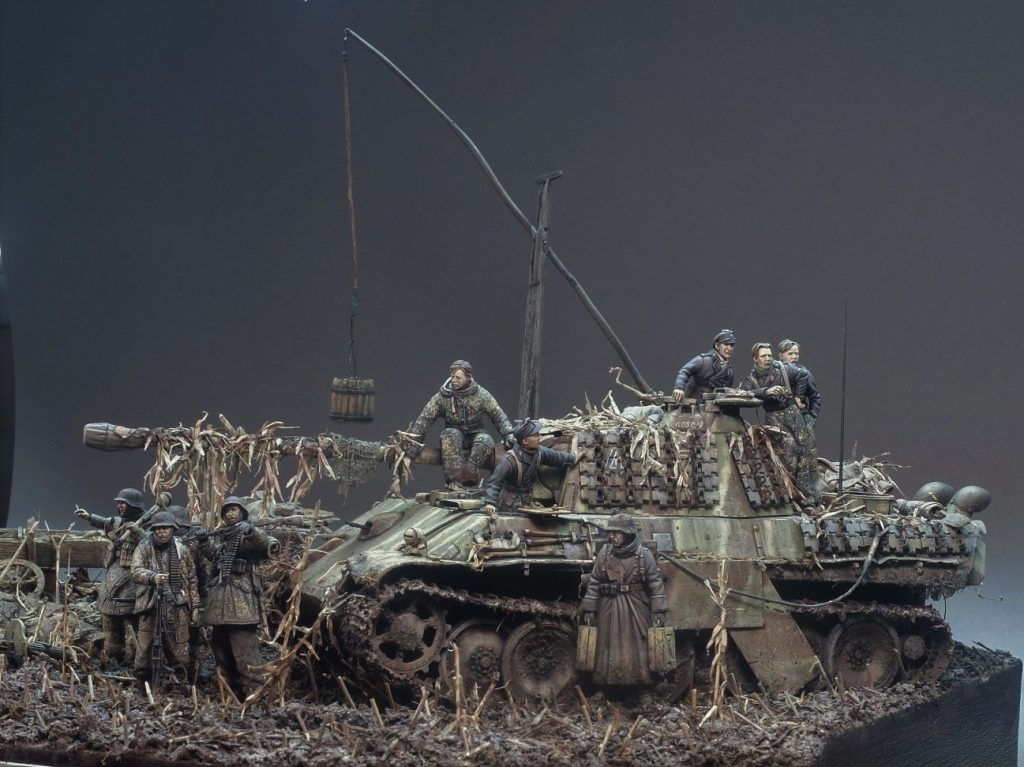
They get very annoyed because they look at the skill and the abilities like, wow, with this ability, I would have done it differently. And it’s like you can sense that. I think at the end of the day, it depends. Because for me, my approach has always been to read up a bit about the subject before I actually embark on the subject itself. And I think you can see this with Mike Blank and Bill Horan, and as well as Shep Payne.
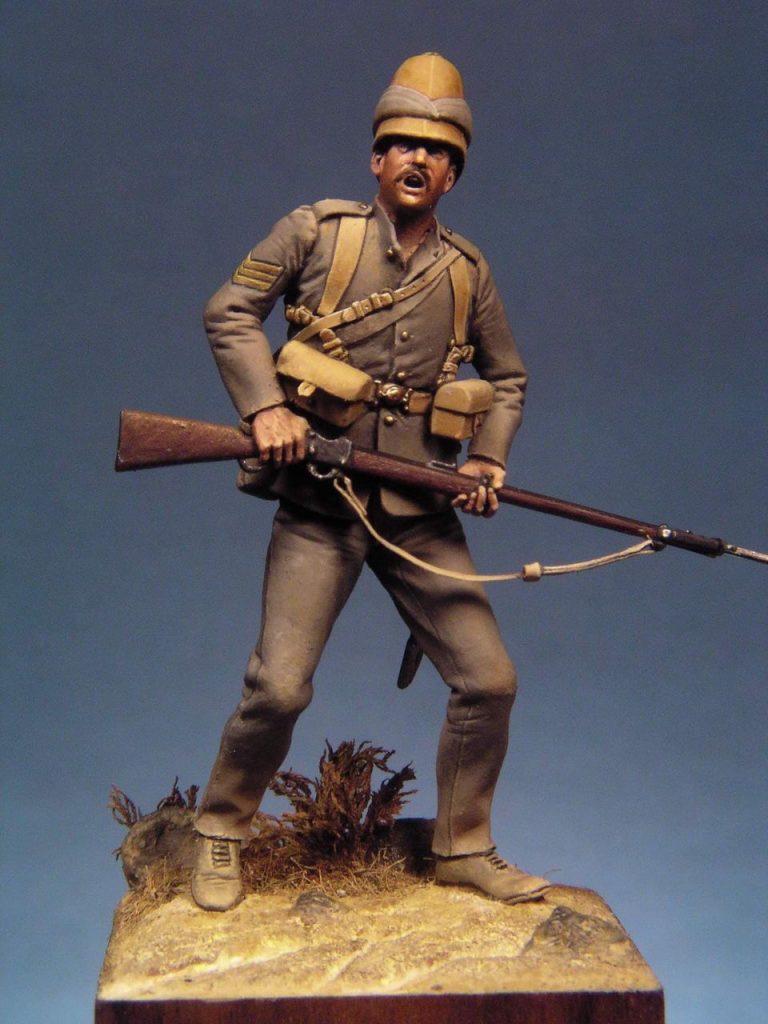
They are in, if you speak to them, if you interact with them, they are all historians. They know, they are able to tell you everything about the subject that they are modelling. And I think that is what gives depth to the models. And you can see there’s a very big difference between a very skilled Russian painter, a fantasy slash historical painter who’s able to paint very well. And if you look at, if you compare the work together with what Bill Horan has, or Mike Blank has with the very skilled painter who only paints. It’s like a gun for hire. You can see there is something missing. You know, it’s something missing. So in a sense, it’s like, if you take ramen and you like cook it and you squeeze tomato ketchup over it, you can’t really call it, you know, bolognese, right? And some people are like, okay, if you take an Instagram photo, it looks the same, but you know, it’s not going to be the same.
Chris
I’m thinking of Mirko’s work though and Roger Hurkmann’s and maybe Volker Bembenek as well a bit. They use quite a desaturated palette and they are dark in a lot of areas. And I wouldn’t necessarily say that was photorealistic, but it adds a mood which is sympathetic to the story they’re telling. So that’s what I’m talking maybe about how you heighten something in order to tell the truth. Because they add that sort of depressive pathos.
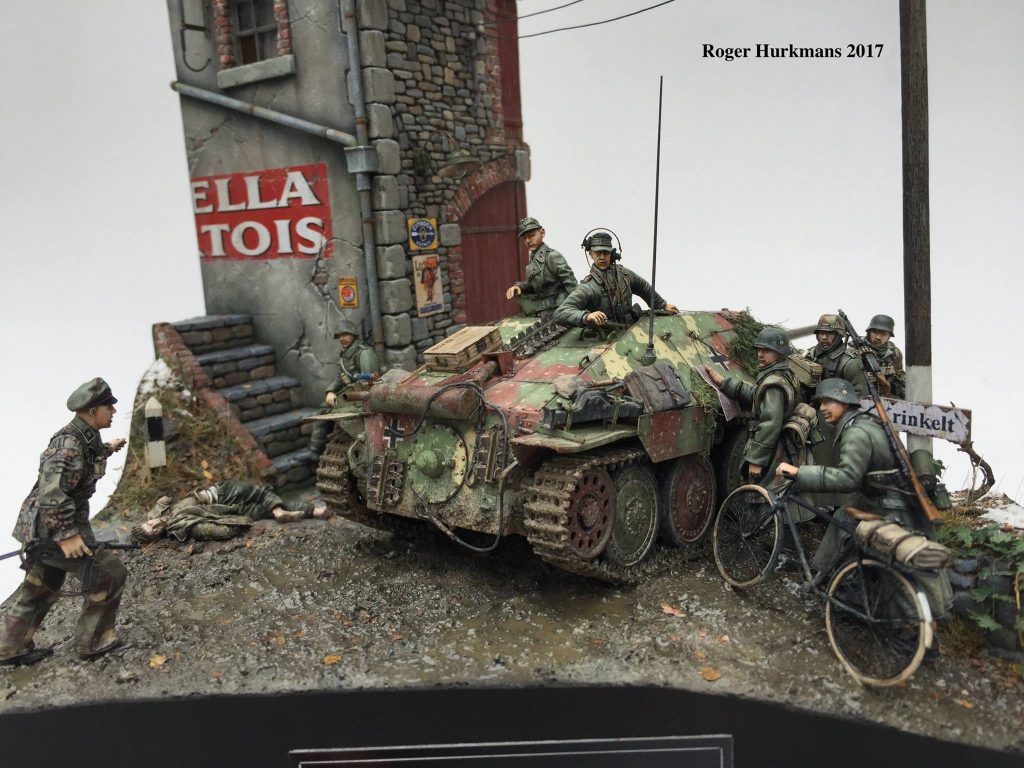
Calvin
Yes. Yes, but at the same time, it should not distort. That’s the thing that a lot of people are doing. They’re using all these techniques. And invariably, it will create a much more visually appealing work. But you get the sense that it’s distorted. It doesn’t really convey the pathos of that particular period, for example.
Chris
Maybe it’s more like craft then, because it’s not done in service to the message in service to what you’re trying to communicate.
Calvin
Exactly. Exactly. And you can see that it’s pretty, and you can see this happening in the fantasy realm, where you’re looking at every piece that you look on the competition tables for the fantasy category, you will see every piece is very bright. It’s out there to catch your eye. And it’s very eye -catching. It’s very decorative. It’s aesthetically, it’s like a table of desserts, right? And that’s what I mean.
I’m not a fantasy painter, but that’s what I sense. I do love desserts, but if I look at it, it’s all sweet, it’s nice, it’s awesome.
Chris
They use incredibly high contrasts, whether it’s light and shade or colors or what have you. It’s ‘s like, you know, you get your stereo and you turn everything all the faders up to the max basically. But I have seen it done really well. At World Model Expo, there was an ogre with a fairy on his finger, tiny little fairy on his finger. And he’s looking at it. But all the light was focused between his eyes and nose and her body and it pulled the focus to the place and created that emotional sort of, joy moment which he’s supposed to be feeling and so on so it can be used well.
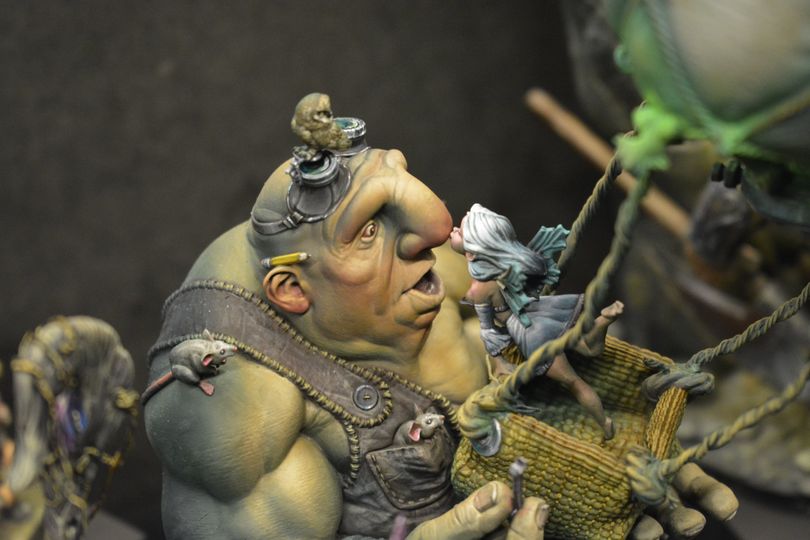
Calvin
Yes, and it does require someone with the sensibility as well as the level of craftsmanship, you know, it takes years of experience to discern what is necessary and what’s not necessary to include in the work.
Chris
I think as well for some people they’re innately good. I don’t know if it’s emotional intelligence which allows them to do it, but some people are very good at.
Calvin
They are more sensitive vessels. And as I said, as artists, we are like vessels. We take in from the, we sort of take in with all the experiences that we have. We bring them together, we coalesce them, and then we sort of channel it into the artwork. And that’s what it is. And everybody has a different take. If everybody has a unique take on life, everybody has a very unique take on a particular story. And everybody will have their own way of trying to tell the story in their own.
Chris
Do you think as modelers we should be trying to put more art into our models?
Calvin
I would say it is useful if that is the purpose. Again, it depends on the approach. So I wouldn’t say that, but I’m saying that we should be recommending that there are many approaches. If you get tired of trying to glue plastics together, you can take it up to a new level and turn it into a work of expression. Because for most people, this is seen as hobby craft. It’s a hobby craft.
“I just want to come in and I just want to just open the cap of thinner or cement and stick pieces of plastic together and build a scene.” For them, it can be as simple as that. But there are some who are a bit more, well, I would say they are more knowledgeable. They read a lot. They get inspired by the stories. And they say, oh, now I want to recreate this moment. I’m going to do this, this, this, this. And they have a clear vision of what the model is going to be.
There are some people who just enjoy the process. I just want to just stick pieces of plastic together and that’s it. And they’re happy doing it. Sometimes you go to clubs and then you see some people say, I’m happy with what I… And the thing is that I don’t really tell them on how to paint. If they’re happy with it, if they’re happy with the results, that’s great, man
Chris
I think 90 % of modelers, that’s what they want to do. And I think in a sense that if we talk about modelling as a hobby and call it one thing, which I don’t think you can, but anyway, then that is it, because that’s what the majority of people want to do. So I think, I mean, I asked whether you think we should, but I don’t think we should be telling people to put more art into their modelling because modelling isn’t really about that. But if you want to make art with models, you can.
Calvin
Yep. Yes. Exactly.
It’s essentially a medium. So it depends on what hat they choose to wear. If you just want to be a craftsman, you put on the craftsman hat and just focus on the craft. And just make sure everything is precise. And then send it to the IPMS show and you get audited. And if you have the least mistakes, you get an award. Right?
Chris
or maybe not show it to anyone just model for the joy of doing it.
Calvin
Yeah, exactly. Correct. You don’t need to show anyone because it’s a hobby, right? You can just build it together, put it in a tupperware, and then put it into your closet, and then start a new piece. I know a lot of modelers like that. They don’t show the work, right? They don’t show the work. It’s purely for their own personal pursuit and mental well -being that they set to build this. But there are artists who want to sort of show, and they feel that perhaps, I guess they feel that the work can make a difference.
They want to show it, and they want to help, they want to be part of a bigger conversation, so to speak, in terms of, or want to be part of a bigger community. And take this art form, take this hobby, and bring it up to a level of an art form.
Chris
Who do you think is making art in modelling at the moment?
Calvin
I would say, OK, so I would say that it depends on the different genres. So if you look at it like Jean Bernard André, he’s actually more in terms of the fine arts because he talks about, I mean, the subject matters that he deals with. It’s more soulful. It’s more emotional. And you can see, he adopts a surreal approach in his work. So in a sense, in terms of the genre, I would say he’s particularly very successful.
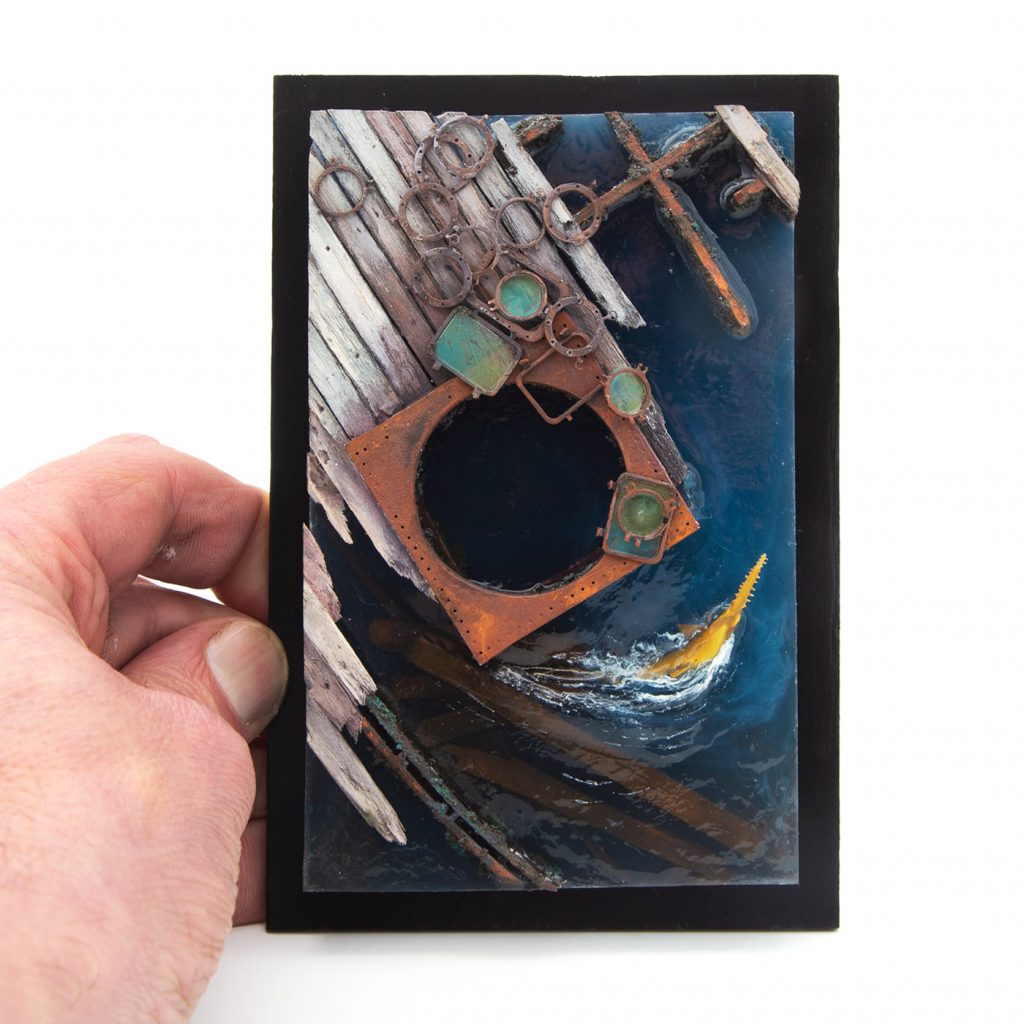
Then if you’re looking at traditional, like for example, Bill Horan, Mike Blank. These guys are more traditional artists in that sense. So they sort of capture the drama and the human, what you call that, emotions, right? During the Victorian or American Civil War periods. So they are particularly successful in this.
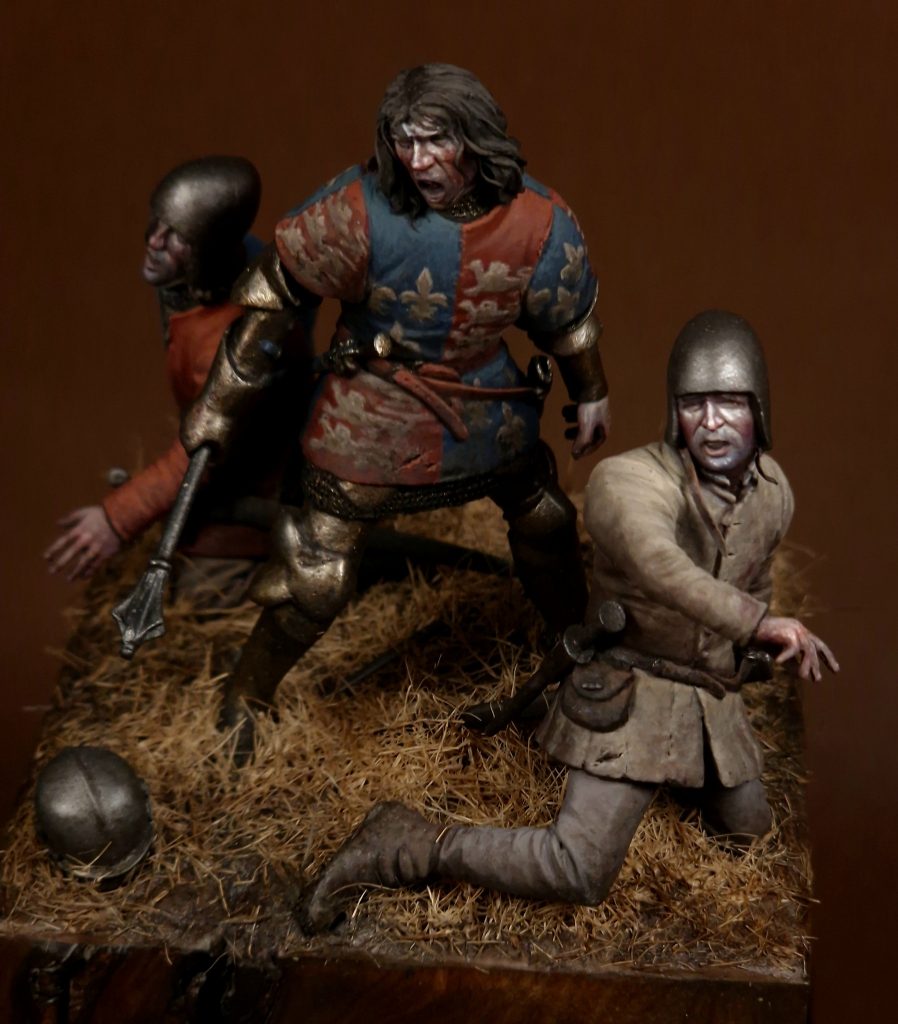
Marijn (van Gils) is more playful, he dabbles in everything from doing a Picasso’s Guernica. And you can see he’s very inspired by Marcel Duchamp. So it’s all about redefining this. So that conversation, I think, Marijn has started out many, many years ago, back in the mid -2000s, as he’s doing this. Always trying to challenge existing status quo, challenging taboos. So that’s one way of looking at it. You can’t really call it fantasy, but I think his work does provoke a lot of thought and thinking.
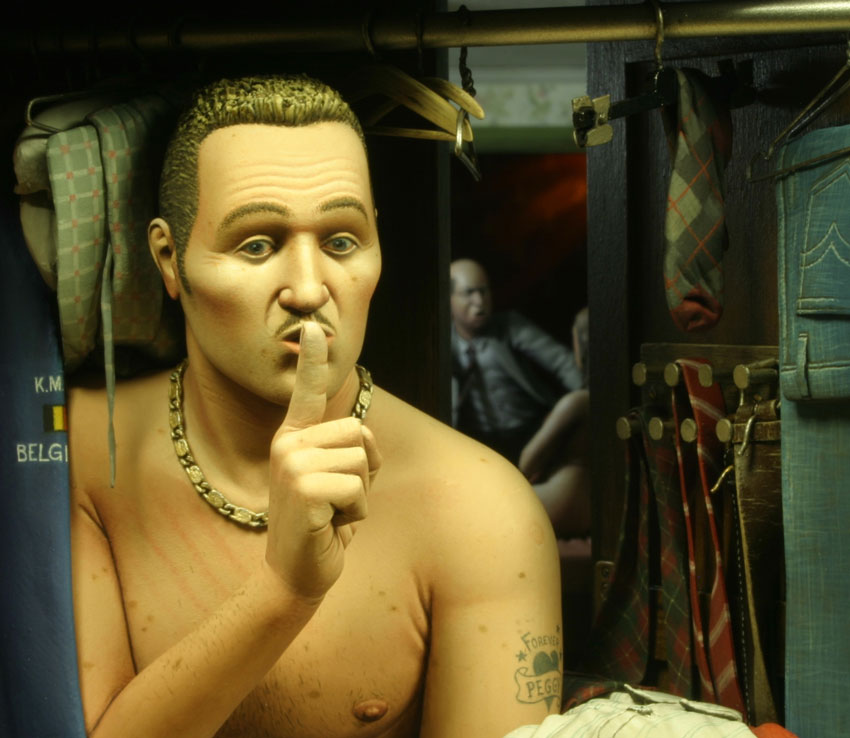
So I think that is something that is, I would say, one of the very defining qualities in which a lot of the artists that model, or modelers who produce some miniature art have in common. The works themselves inspires not just an emotional response, but also inspires conversations. It becomes what you call that a centerpiece to promote another conversation. So it’s like, I would say, yeah, that’s how I would say that three people are talking about it, and you’ll be using this as a segue to discuss something even broader, for example.
Chris
Modelling doesn’t need to be art. People like to call their modelling art. They don’t need to use that word to justify what they’re doing.
Calvin
I don’t think you need to. I think for us, it depends on whether or not are you doing this professionally as an artist. And then because it’s going to be very different if you’re pursuing this as a hobby. Because if you’re doing it as a hobby, then as long as I’m happy creating something, people enjoy it, I’m pretty happy about it. And the thing is that about art is that it needs to have an audience. And ultimately, once the work goes into the public domain is no longer yours. It’s going to be seen through the lens of others, and they’re going to have their opinions about it. Some may love it. Some may hate it. But eventually, it’s still the work. So unless the artist, the creator, has a specific intent for the work, and that’s where criticism and critique comes in to sort of perhaps helps you suss out any blind spots that you have overlooked.
I think critique is also very important, because some people may critique this based on the historical context. Some people may even critique it based on their own personal experiences. So if you have just, for example, I can understand why the Nazi symbol, the swastika, is particularly offensive to some people. Because they have lived through it, there are certain memories, bad memories, horrific memories connected with that particular symbol and therefore, you know, it conjures up, you know, a lot of, a lot of sentiment as well.
Chris
if art’s a conversation, then, which I think it is, between the artist and the viewer, then the artist has to listen as well as speak. So when the critique comes back, they have to take on board that if people don’t get it or something isn’t right about it or they’re getting something negative, then it’s possibly a fault in how they communicate what they’re trying to say.
Calvin
Exactly. Yes. I think a lot of people, on the surface, they may seem that they are asking for feedback, but in actual fact, their intent is to, you know, they are fishing for praise, basically. They’re fishing for compliments, actually. So generally for me, where I look at it is that I always treat critique as a way to sort of, you know, learn from mistakes because I do not know everything.
And sometimes I think we also have to defend the decisions that we have made with regards to the style we have adopted to represent our subject matter. Whether or not to use post -shading, modulation, or is it too much to put the chips too much, so on and so forth. I think we need to defend it. And it depends on what you want to convey. And as well as the colors as well. When do we use a highly saturated color, and when do we use a very desaturated palette, for example. And I think, again, it’s all about the individual’s take. And I think what we want to do is we want to promote a very safe environment whereby nobody’s wrong, but nobody’s totally right either. But we want to make sure that we have this exchange.
Chris
Yes
Calvin
It’s OK to have disagreements. But I think at the end of the day, as long as we are able to respect each other’s positions, I think that’s the most important thing. And I think it takes a lot of maturity for a community to sort of adopt these practices.
Chris
Yeah, I think that’s a great place to end. So thank you very much Calvin
Calvin
Yep. All right. Thank you very much
You can find Calvin’s Blog at https://zyclyon.blogspot.com/
He is on facebook here: https://www.facebook.com/CalvinTanEuJin

Thanks to both of you for this very interesting discussion.
Great blog as always, Chris. I’ve always loved Calvin’s work, and it’s nice to see him give a nod to Bill Horan, Shep Paine and Mike Blank, amongst others. They were very important to my figure painting journey.
Thanks Pete. I think part of what makes Calvin a great painter is that he knows the game so well, and that means knowing the players and what they have contributed to the hobby
That was good to read. I enjoy topics on modelling that are not about kits and techniques etc. Modelling for me is also a thinking game where I can lose myself. The act of creating and the act of absorbing knowledge, techniques, or viewpoints are both important to my craft. I have yet to make any art whilst modelling. I do consider my work a craft only. I see others though and think that they have stepped outside the box to deliver something unusual and new. That is the art.
Thanks John, there are a lot of blogs, books, youtubes, podcasts etc that cover technique and kits. I wanted this blog to be different
Hi Chris
I’m literally a huge fan of Calvin. His phiolsoper reminds me a old friend, Rochem Cheng, http://www.rochmmodel.com/EN/gallery.htm, unlike many of master, Rochem never manufacture dioramas.
In 2014, he said something about Color Modulation technique:
“Scale models can never deviate from the fundamental motive of restoring the real in any case, the search for truth and the search for beauty, naturally the narrow sense of the search for beauty for the purpose of pleasing the eye is easier to achieve. Most of CM works are routine, lacking in broad changes, relying only on exaggerated effects in color changes to attract attention, and in fact, they do not even look good under non-directional light sources. Also, they are always not very well done, with many construction flaws. The technique is at best a fancy job that is easy to reproduce, and the post-production effects are still stuck in the metaphysical “weathering” concept, with little subjective control over many of the techniques, such as splatters of dirt, which don’t allow the colors to stay exactly where you want them to be. Art is not a narrow common aesthetic, but the depth of the system thinking and skills, military models, especially ground equipment according to the common aesthetic are difficult to beauty, no matter how beautiful makeup. The real art is to be able to embrace and even portray everything including the ugly. Scale model of the real value is also here, the need to create a breakthrough is not simply a coloring system, but to explore all the ways to achieve the purpose of simulation, do not narrowly think that the real is not created.”
Anyway, thank for your sharing. May I have your permission to translate this article into Chinese and publish it in Chinese modellers’ communities?
Convey my regards to you and Clavin.
Lee
Hi Human, please do translate and share.
THank you for your interesting thoughts and comments, and contribution to this discussion. Whilst I broadly agree with you though,
I do have an issue with this “Scale models can never deviate from the fundamental motive of restoring the real in any case, the search for truth and the search for beauty”
Mr Cheng seems to think that modelling is art. Thats OK. But he also says modelling cannot deviate from the objective of realism. By extension he seems to say art is finding beauty in everything, and depicting it realistically.
This is an understanding of art that stops at the end of the 19th century and ignores everything from Impressionism, to cubism, to expressionism, to dadaism, to surrealism to abstract expressionism, to post modernism, to conceptual contemporary art.
Picasso’s Guernica is brutally truthful. Is it not art because it is not realism or beautiful?
It is true that exaggeration of colour or deviations from realism without purpose are not art. but if these deviations from strict adherence to realism are used mindfully, with purpose, and effectively, they can tell a truth plain realism cannot
I don’t think he would now reject this tendency to associate scalemodeling with non-realistic painting and installation art. After all, he said that more than 10 years ago, when people still had no idea about these, especially in China.
After spending some time reading all the articles in your blog, I agree with you very much. Thank you for your thoughts and sharing and I hope to have the opportunity to talk with you more in the future.
I think, if I understand him correctly, I agree with Mr Cheng about how well techniques are sometimes applied, and when they are applied merely to make a model more attractive. There does need to be more intention to how they are used, and more direction to them if the modeller wishes to use them to evoke something in the viewer other than a shallow aesthetic appeal
Great interview Chris and a great first episode. I am glad that you are taking on the philosophical aspect of the hobby. I get lots of time to think about it driving to and from work while listening to SCU and now this one. This is an untapped subject and will generate lots of discussion.
I had thoughts throughout the episode and for the rest of my drive but they soon evaporated once I was distracted with dinner and family and nightly routines, so I will have to come back next time with better comments. Sorry to make you read all this way without any real substance. Unless you havent read this far in which case you wont see this: fuck wank bugger shitting arse head and hole.
Looking forward to many more of these episodes so dont burn yourself out – Cheers dude!
dude, you are going to have to try harder if you want to sneak something onto the end of a message, that was short lol
well to be honest I wasnt trying, but I am aware that it takes me a really long time to say almost nothing. either way I am glad you read all the way to the end!